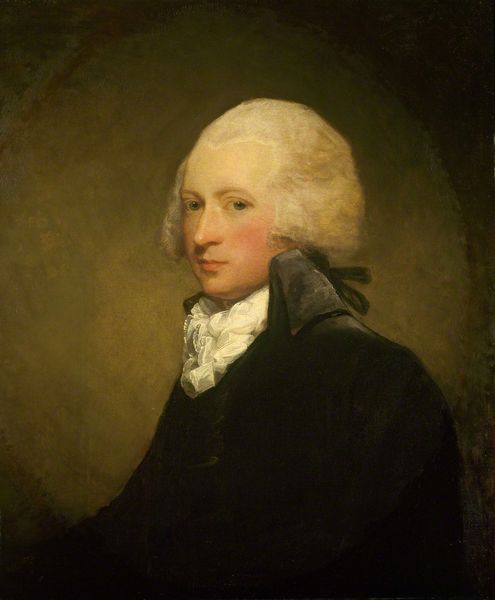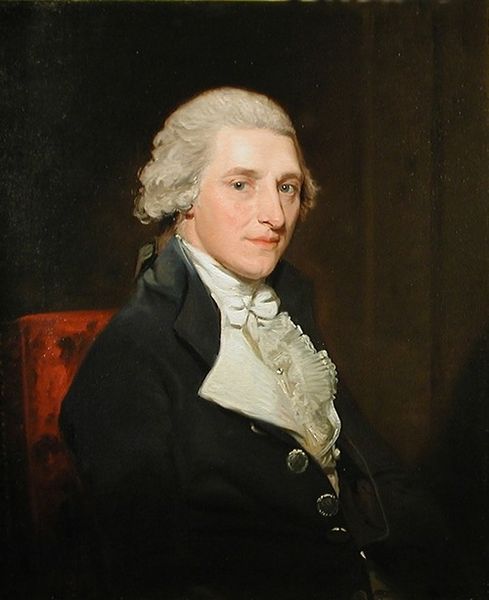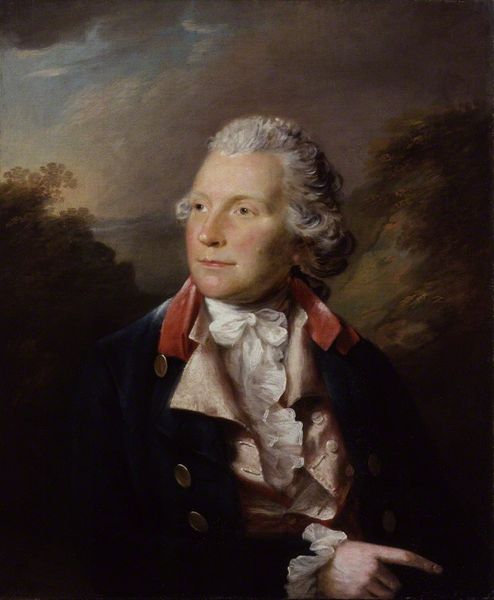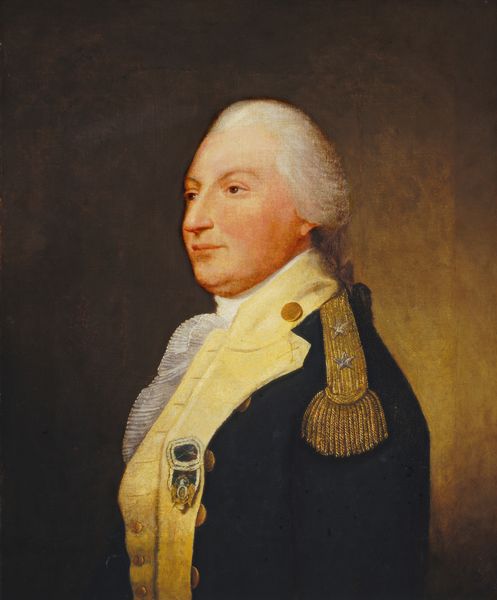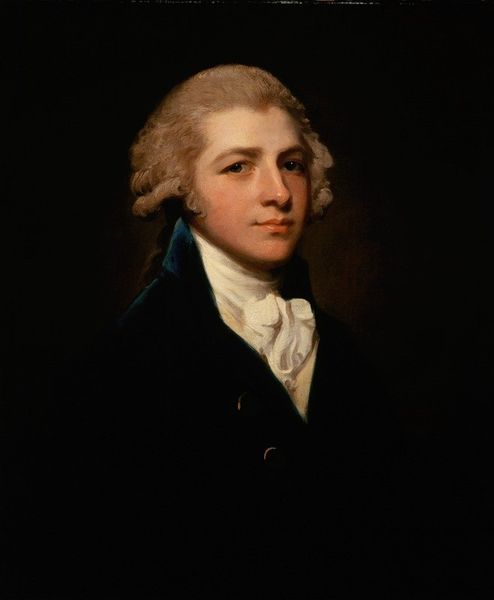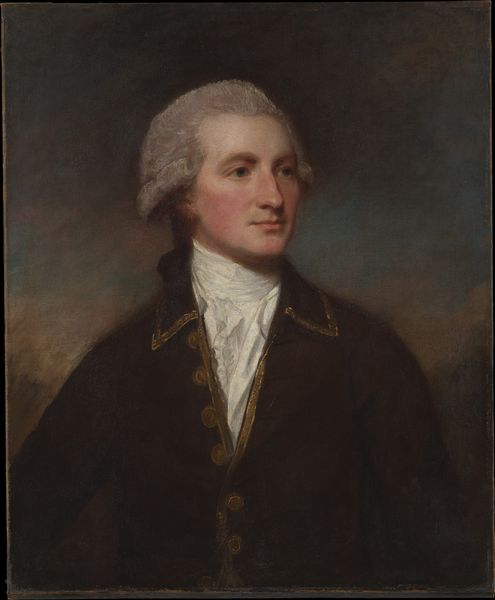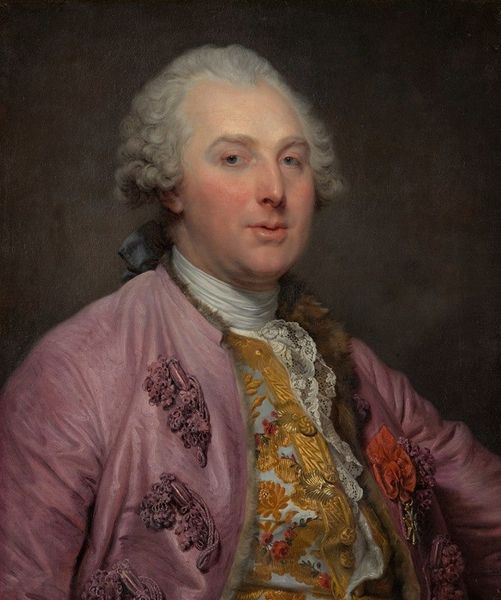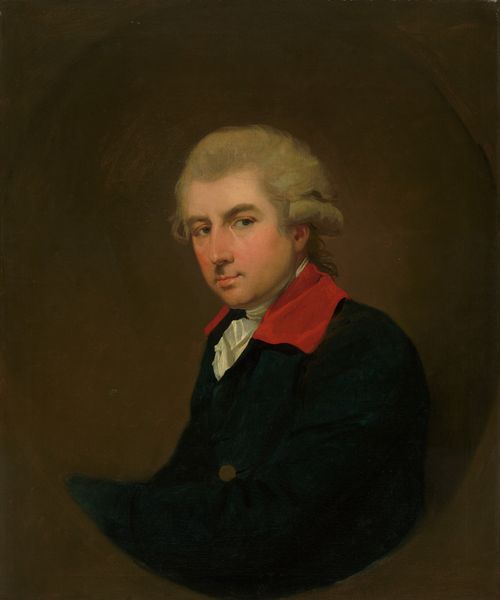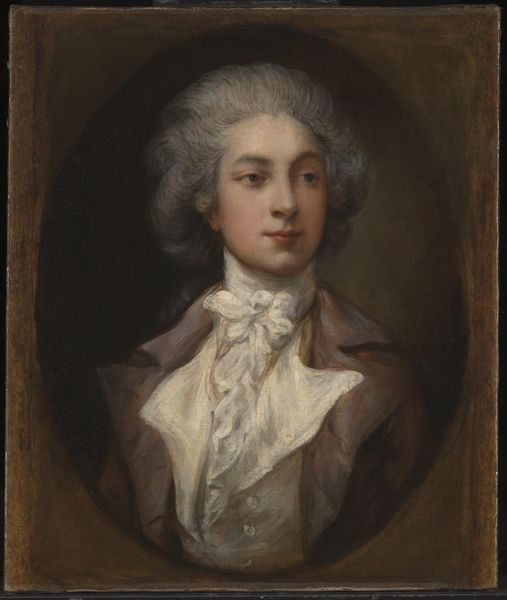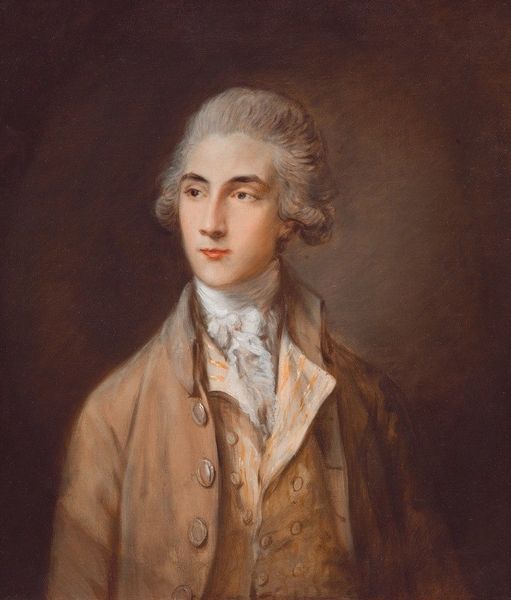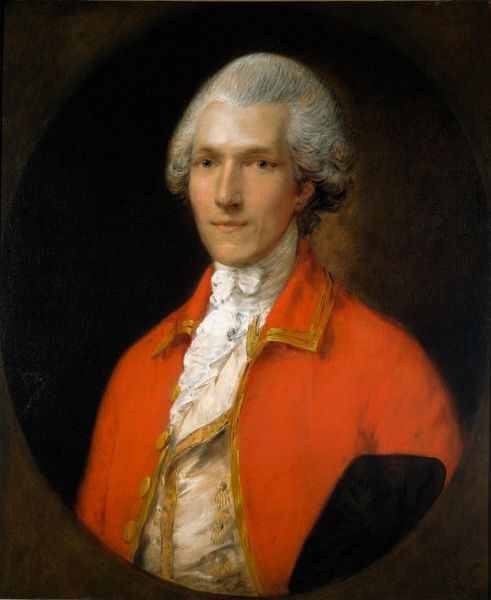
George Macartney, 1st Earl Macartney; Sir George Leonard Staunton, 1st Bt
0:00
0:00
painting, oil-paint
#
portrait
#
neoclacissism
#
portrait
#
painting
#
oil-paint
#
male portrait
#
romanticism
#
history-painting
#
academic-art
Copyright: Public domain
Editor: This portrait by Lemuel Francis Abbott is titled "George Macartney, 1st Earl Macartney; Sir George Leonard Staunton, 1st Bt" and is an oil painting. The pale complexion of the men is really striking, almost ghostly against the dark background. What can you tell me about this work? Curator: Indeed. Abbott presents us with a classic example of late 18th-century portraiture, reflecting both Neoclassical and Romantic aesthetics, but it also invites questions about power and representation within the British Empire. Given Macartney's role as an envoy to China, how does this portrait engage with the visual construction of British authority in a global context? Consider, for instance, the men’s posture and attire. Editor: So you are thinking of how it affects how we see the sitters and British Imperialism? I wouldn't have thought about that, as they just seem like regular portraits. It almost feels unfinished to me. Curator: Exactly! The seeming ordinariness is deceptive. While seemingly straightforward, the portrait performs a complex social function, shaping public perception of these figures. Think about the purpose these portraits would serve: who was intended to view it, and what messages were conveyed by this display of power? What story did this serve to tell about these figures to a European audience? Editor: So, a tool of image making, essentially. By understanding how art is exhibited, it offers more context. I always saw these as simply nice portraits, but the power dynamic wasn't even on my radar! Curator: Precisely. Art, especially portraiture, is rarely just a likeness. Considering the museum, the artist, and sitter sheds so much light on the politics of seeing. Editor: That's definitely shifted my perspective! Thanks for elaborating on it; I'll remember to ask myself those questions in the future.
Comments
No comments
Be the first to comment and join the conversation on the ultimate creative platform.


